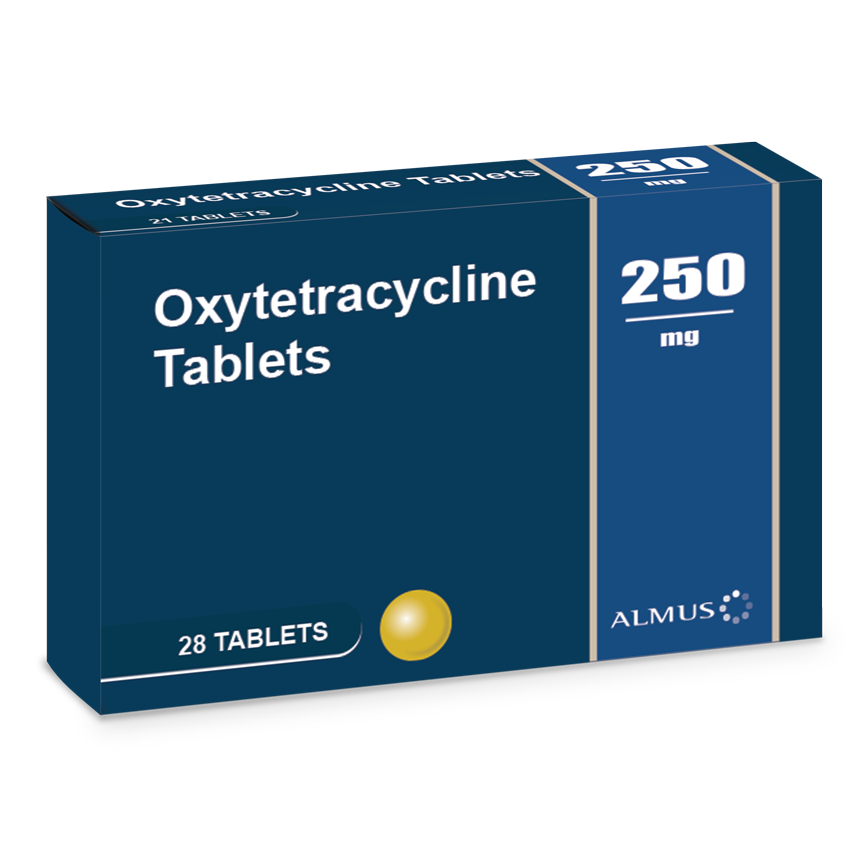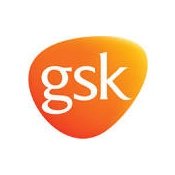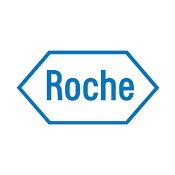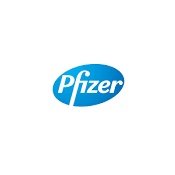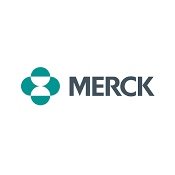*Brands may vary. please contact us for specific brands.
Oxytetracycline 250mg (112 Tablets)
£39.89
- Affective, Long-Term Acne Treatment
- Active Ingredient: Oxytetracycline
- Reduces Acne Infection, Allowing Spots To Heal
- Buy With Confidence From UK Registered Pharmacy
- Includes Free Prescription
Oxytetracycline is an antibiotic for acne that restricts the acne causing bacteria, allowing the body’s natural defence system to completely eliminate them. By reducing the infection, the spots are able to heal which leaves the skin noticeably clearer. This is a long-term and effective acne treatment.
Click Here To Complete Consultation
Out of stock
Buy more and save!
| Quantity | 1 | 2 | 3 |
|---|---|---|---|
| Price (each) | £39.89 | £35.90 | £31.91 |

Discreet Packaging

UK Based
-
Buy Oxytetracycline UK Online
My Pharmacy is the Best Place to Buy Oxytetracycline Acne Online UK in 2019. To Order Oxytetracycline Tablets Online in the UK you are required to have a prescription, which you can acquire with our free online consultation service.Buy Oxytetracycline Acne Online UK Next Day Delivery
Through My Pharmacy you can Buy Oxytetracycline Tablets Online UK Next Day Delivery. Each treatment is sent out in secure and discreet packaging ensuring that you get your medicine on time and intact.Oxytetracycline BNF
Oxytetracycline BNF is a broad tetracycline antibiotic, which is a substance that has anti-bacterial action. It can be used to treat a large variety of infections caused by bacteria. Some of the Oxytetracycline BNF infections treat include –- Pneumonia, bronchitis and other lung infections
- Urinary tract infections
- Chlamydia, gonorrhoea and other sexually transmitted diseases
- Acne
- Conjunctivitis and other eye infections
Oxytetracycline NHS
If Oxytetracycline NHS is prescribed by your doctor, you can order a prescription of Oxytetracycline 250mg or Oxytetracycline 500mg via My Pharmacy. My Pharmacy is a leading Online Pharmacy (Online Chemist) in the UK. Through our free online consultation service, you can Order Your Oxytetracycline NHS Prescription Online through our consultation service similar to how you would from an Online Doctor UK. Trust us to deliver high quality affordable medicine, delivery is free* and advice and aftercare come as standard. If you have any further questions regarding Oxytetracycline NHS and online prescriptions, do not hesitate to contact us via our email.Oxytetracycline 250mg
My Pharmacy offers two different strengths of Oxytetracycline. Oxytetracycline 250mg is the lowest strength on offer, whilst Oxytetracycline 500mg is the highest. The dosage guidelines for both Oxytetracycline 250mg and 500mg depend on the infection and if the person is a child or adult. For susceptible infections such as chlamydia, mycoplasma and rickettsia, it should be taken by mouth and should be taken the follow amount of times a day; For children between the ages of 12 to 17 years old, 4 times a day. For adults, 4 times a day. The above dosage guidelines are for both strengths, 250mg and 500mg.Oxytetracycline 500mg
My Pharmacy offers two different strengths of Oxytetracycline. Oxytetracycline 500mg is the highest strength on offer, whilst Oxytetracycline 250mg is the lowest. The dosage guidelines for both Oxytetracycline 500mg and 250mg depend on the infection and if the person is a child or adult.Oxytetracycline Uses
Oxytetracycline uses encompass a wide range of infections, both common and rare. Because of its better absorption profile, it’s preferable to tetracycline when treating severe acne at a dosage of 250mg to 500mg. Other areas of infection it can treat include respiratory and urinary tracts, skin, ear, eye and gonorrhoea. Oxytetracycline uses in these areas have declined in recent years however. This is because of a large increase in bacterial resistance to this specific class of drugs. When using Oxytetracycline to treat other area of infections such as the eye or muscles, Oxytetracycline can be administered via intramuscular injection or in the form of creams and eye drops. It may be worth discussing with your doctor the Oxytetracycline uses and its effects on your specific condition. You can Buy Oxytetracycline UK and other Oxytetracycline alternative from our online shop.Oxytetracycline Acne
Oxytetracycline acne antibiotic can be used to treat acne when used in conjunction with a topical cream such as epiduo gel. When used it reduces the amount of bacteria on your skin, thus reducing the inflammation and spots that are classic acne symptoms. Once Oxytetracycline acne course has been taken for several weeks, you should start to see an improvement in the appearance of your skin. If Oxytetracycline hasn’t improved your acne in several weeks, you should speak with your doctor about using alternative treatments, including a higher strength and dose.Oxytetracycline Rosacea
Oxytetracycline Rosacea is a common skin conditions that causes visible bloods vessels and redness in your face. It can also cause small, red, pus-filled bumps called papules and pustules. Oxytetracycline rosacea has been shown to decrease the amount of inflammatory papules and pustules. Results will take between 6 to 12 weeks. When taking Oxytetracycline rosacea you should take it twice daily, taking it before or after a meal, never with a meal.Oxytetracycline Chlamydia
Oxytetracycline chlamydia is one of the many infections that Oxytetracycline covers. In recent years however, it has been shown that Doxycycline is now preferred to Oxytetracycline chlamydia because it has improved pharmacologic features. For further information about whether or not Oxytetracycline chlamydia may be the correct treatment for you, speak with your doctor or pharmacist.Oxytetracycline For Dogs
In order to Buy Oxytetracycline For Dogs you will need a Pet Prescription from your licensed UK vet. With this prescription you can then Order Pet Medication Online from My Pharmacy. Simply send an email to info@mypharmacy.co.uk for a free quote. To order prescription treatments for your pet from My Pharmacy please follow these simple steps:- Contact us on info@mypharmacy.co.uk for a free quote of Oxytetracycline for dogs
- Once you’ve received your quote send your pet’s prescription to our freepost address: My Pharmacy, 58 – 60 Queen Street, Great Harwood, Lancs, BB67AL
- Be sure to put your quote reference number when you send us your prescription
- Our licensed pharmacist will check your prescription and then send out your treatment along with your prescription, for example, Oxytetracycline for Dogs
Oxytetracycline Side Effects
Like with all medicine, Oxytetracycline Side Effects can occur but these aren’t experienced by everyone. If you experience any of these Oxytetracycline side effects, especially if any of them are getting progressively worse, immediately stop and speak to your doctor as soon as possible. Below is a list of Oxytetracycline Side Effects experienced more, or less when people have taken Oxytetracycline tablets. For a full list, please refer to the patient information leaflet. Common or Very Common- Angioedema
- Headache
- Diarrhoea, nausea
- Hypersensitivity
- Skin reactions
- Vomiting
- Decreased appetite
- Thyroid gland discolouration
- Gastrointestinal disorders
- Increased risk of infection
- Pancreatitis
- Dizziness
- Tooth discolouration
Oxytetracycline and Alcohol
Oxytetracycline and alcohol are generally safe to be taken together. There is no ‘do not drink alcohol’ warning that applies to Oxytetracycline and alcohol. However, taking alcohol during an infection or if Oxytetracycline causes you to have side effect such as nausea or headache, drinking alcohol may cause these side effects to worsen. Drinking excessive amounts when taking Oxytetracycline and alcohol could also increase the chance of side effects affecting your liver.Oxytetracycline Alternative
You can buy Oxytetracycline acne online from My Pharmacy, we also offer many other Oxytetracycline alternative and acne treatment options. You may be interested in any of the following Oxytetracycline alternative –How to take Oxytetracycline?
It is important to take the tablets at regular intervals and to take the full course to prevent the infection returning, unless your doctor advises otherwise.- Take two 250 mg pills twice a day, every day.
- The tablets should be swallowed preferably with plenty of water on an empty stomach (at least one hour before, or two hours after meals).
- DO NOT take indigestion remedies or medicines containing aluminium, magnesium, calcium, zinc, or iron at the same time of day as this medicine
-
Acne
Acne is a common skin condition that affects most people at some point. It causes spots, oily skin and sometimes skin that’s hot or painful to touch.
Acne most commonly develops on the:
face – this affects almost everyone with acne
back – this affects more than half of people with acne
chest – this affects about 15% of people with acne
Picture of acne spots
Types of spots
There are six main types of spot caused by acne:blackheads – small black or yellowish bumps that develop on the skin; they’re not filled with dirt, but are black because the inner lining of the hair follicle produces pigmentation (colouring)
whiteheads – have a similar appearance to blackheads, but may be firmer and won’t empty when squeezed
papules – small red bumps that may feel tender or sore
pustules – similar to papules, but have a white tip in the centre, caused by a build-up of pus
nodules – large hard lumps that build up beneath the surface of the skin and can be painful
cysts – the most severe type of spot caused by acne; they’re large pus-filled lumps that look similar to boils and carry the greatest risk of causing permanent scarring
What can I do if I have acne?
These self-help techniques may be useful:Don’t wash affected areas of skin more than twice a day. Frequent washing can irritate the skin and make symptoms worse.
Wash the affected area with a mild soap or cleanser and lukewarm water. Very hot or cold water can make acne worse.
Don’t try to “clean out” blackheads or squeeze spots. This can make them worse and cause permanent scarring.
Avoid using too much make-up and cosmetics. Use water-based products that are described as non-comedogenic (this means the product is less likely to block the pores in your skin).
Completely remove make-up before going to bed.
If dry skin is a problem, use a fragrance-free, water-based emollient.
Regular exercise can’t improve your acne, but it can boost your mood and improve your self-esteem. Shower as soon as possible once you finish exercising, as sweat can irritate your acne.
Wash your hair regularly and try to avoid letting your hair fall across your face.
Although acne can’t be cured, it can be controlled with treatment. Several creams, lotions and gels for treating spots are available at pharmacies.If you develop acne, it’s a good idea to speak to your pharmacist for advice. Products containing a low concentration of benzoyl peroxide may be recommended – but be careful, as this can bleach clothing.
If your acne is severe or appears on your chest and back, it may need to be treated with antibiotics or stronger creams that are only available on prescription.
When to seek medical advice
Even mild cases of acne can cause distress. If your acne is making you feel very unhappy or you can’t control your spots with over-the-counter medication, see your GP.Also see your GP if you develop nodules or cysts, as they need to be treated properly to avoid scarring. Try to resist the temptation to pick or squeeze the spots, as this can lead to permanent scarring.
Treatments can take up to three months to work, so don’t expect results overnight. Once they do start to work, the results are usually good.
Why do I have acne?
Acne is most commonly linked to the changes in hormone levels during puberty, but can start at any age.Certain hormones cause the grease-producing glands next to hair follicles in the skin to produce larger amounts of oil (abnormal sebum).
This abnormal sebum changes the activity of a usually harmless skin bacterium called P. acnes, which becomes more aggressive and causes inflammation and pus.
The hormones also thicken the inner lining of the hair follicle, causing blockage of the pores (opening of the hair follicles). Cleaning the skin doesn’t help to remove this blockage.
Other possible causes
Acne is known to run in families. If both your mother and father had acne, it’s likely that you’ll also have acne.Hormonal changes, such as those that occur during the menstrual cycle or pregnancy, can also lead to episodes of acne in women.
There’s no evidence that diet, poor hygiene or sexual activity play a role in acne.
Who’s affected?
Acne is very common in teenagers and younger adults. About 80% of people aged 11 to 30 are affected by acne.Most people have acne on and off for several years before their symptoms start to improve as they get older. Acne often disappears when a person is in their mid-twenties.
In some cases, acne can continue into adult life. About 5% of women and 1% of men have acne over the age of 25.
Causes
Acne is caused when tiny holes in the skin, known as hair follicles, become blocked.Sebaceous glands lubricate the hair and the skin to stop it drying out. They do this by producing an oily substance called sebum.
In acne, the glands begin to produce too much sebum. The excess sebum mixes with dead skin cells and both substances form a plug in the follicle.
If the plugged follicle is close to the surface of the skin, it bulges outwards, creating a whitehead. Alternatively, the plugged follicle can be open to the skin, creating a blackhead.
Normally harmless bacteria that live on the skin can then contaminate and infect the plugged follicles, causing papules, pustules, nodules or cysts.
Testosterone
Teenage acne is thought to be triggered by increased levels of a hormone called testosterone, which occurs during puberty. The hormone plays an important role in stimulating the growth and development of the penis and testicles in boys, and maintaining muscle and bone strength in girls.The sebaceous glands are particularly sensitive to hormones. It’s thought that increased levels of testosterone cause the glands to produce much more sebum than the skin needs.
Acne in families
Acne can run in families. If your parents had acne, it’s likely that you’ll also develop it.Acne in women
More than 80% of cases of adult acne occur in women. It’s thought that many cases of adult acne are caused by the changes in hormone levels that many women have at certain times.These times include:
periods – some women have a flare-up of acne just before their period
pregnancy – many women have symptoms of acne at this time, usually during the first three months of their pregnancy
polycystic ovary syndrome – a common condition that can cause acne, weight gain and the formation of small cysts inside the ovary
Other triggers
Other possible triggers of an acne flare-up include:some cosmetic products – however, this is less common as most products are now tested, so they don’t cause spots (non-comedogenic)
certain medications – such as steroid medications, lithium (used to treat depression and bipolar disorder) and some anti-epileptic drugs (used to treat epilepsy)
regularly wearing items that place pressure on an affected area of skin, such as a headband or backpack
smoking – which can contribute to acne in older people
Acne myths
Despite being one of the most widespread skin conditions, acne is also one of the most poorly understood. There are many myths and misconceptions about it:“Acne is caused by a poor diet”
So far, research hasn’t found any foods that cause acne. Eating a healthy, balanced diet is recommended because it’s good for your heart and your health in general.“Acne is caused by having dirty skin and poor hygiene”
Most of the biological reactions that trigger acne occur beneath the skin, not on the surface, so the cleanliness of your skin has no effect on your acne. Washing your face more than twice a day could just aggravate your skin.“Squeezing blackheads, whiteheads and spots is the best way to get rid of acne”
This could actually make symptoms worse and may leave you with scarring.“Sexual activity can influence acne”
Having sex or masturbating won’t make acne any better or worse.“Sunbathing, sunbeds and sunlamps help improve the symptoms of acne”
There’s no conclusive evidence that prolonged exposure to sunlight or using sunbeds or sunlamps can improve acne. Many medications used to treat acne can make your skin more sensitive to light, so exposure could cause painful damage to your skin, and also increase your risk of skin cancer.“Acne is infectious”
You can’t pass acne on to other people.Diagnosis
Your GP can diagnose acne by looking at your skin. This involves examining your face, chest and back for the different types of spot, such as blackheads or sore, red nodules.How many spots you have and how painful and inflamed they are will help determine how severe your acne is. This is important in planning your treatment.
Four grades can be used to measure the severity of acne:
grade 1 (mild) – acne is mostly confined to whiteheads and blackheads, with just a few papules and pustules
grade 2 (moderate) – there are multiple papules and pustules, which are mostly confined to the face
grade 3 (moderately severe) – there’s a large number of papules and pustules, as well as the occasional inflamed nodule, and the back and chest are also affected by acne
grade 4 (severe) – there’s a large number of large, painful pustules and nodules
Acne in women
If acne suddenly starts in adult women, it can be a sign of a hormonal imbalance, especially if it’s accompanied by other symptoms such as:excessive body hair (hirsutism)
irregular or light periods
The most common cause of hormonal imbalances in women is polycystic ovary syndrome (PCOS). PCOS can be diagnosed using a combination of ultrasound scans and blood tests..
Treatment
Treatment for acne depends on how severe it is. It can take several months of treatment before acne symptoms improve.If you just have a few blackheads, whiteheads and spots, you should be able to treat them successfully with over-the-counter gels or creams (topical treatments) that contain benzoyl peroxide.
Treatments from your GP
See your GP if your acne is more widespread, as you probably need prescription medication. For example, if:you have a large number of papules and pustules
over-the-counter medication hasn’t worked
Prescription medications that can be used to treat acne include:topical retinoids
topical antibiotics
azelaic acid
antibiotic tablets
in women, the combined oral contraceptive pill
isotretinoin tablets
If you have severe acne, your GP can refer you to an expert in treating skin conditions (dermatologist). For example, if you have:a large number of papules and pustules on your chest and back, as well as your face
painful nodules
A combination of antibiotic tablets and topical treatments is usually the first treatment option for severe acne. If this doesn’t work, a medication called isotretinoin may be prescribed.Hormonal therapies or the combined oral contraceptive pill can also be effective in women who have acne. However, the progestogen-only pill or contraceptive implant can sometimes make acne worse.
Many of these treatments can take two to three months before they start to work. It’s important to be patient and persist with a recommended treatment, even if there’s no immediate effect.
Topical treatments (gels, creams and lotions)
Benzoyl peroxide
Benzoyl peroxide works as an antiseptic to reduce the number of bacteria on the surface of the skin. It also helps to reduce the number of whiteheads and blackheads, and has an anti-inflammatory effect.Benzoyl peroxide is usually available as a cream or gel. It’s used either once or twice a day. It should be applied 20 minutes after washing to all of the parts of your face affected by acne.
It should be used sparingly, as too much can irritate your skin. It also makes your face more sensitive to sunlight, so avoid too much sun and ultraviolet (UV) light, or wear sun cream.
Benzoyl peroxide can have a bleaching effect, so avoid getting it on your hair or clothes.
Common side effects of benzoyl peroxide include:
dry and tense skin
a burning, itching or stinging sensation
some redness and peeling of the skin
Side effects are usually mild and should pass once the treatment has finished.Most people need a six-week course of treatment to clear most or all of their acne. You may be advised to continue treatment less frequently to prevent acne returning.
Topical antibiotics
Topical antibiotics help kill the bacteria on the skin that can infect plugged hair follicles. They’re available as a lotion or gel that is applied once or twice a day.A six- to eight-week course is usually recommended. After this, treatment is usually stopped, as there’s a risk that the bacteria on your face could become resistant to the antibiotics. This could make your acne worse and cause additional infections.
Side effects are uncommon, but can include:
minor irritation of the skin
redness and burning of the skin
peeling of the skinTetracyclines can make your skin sensitive to sunlight and UV light, and can also make the oral contraceptive pill less effective during the first few weeks of treatment.
You’ll need to use an alternative method of contraception, such as condoms, during this time.
Hormonal therapies
Hormonal therapies can often benefit women with acne, especially if the acne flares up around periods or is associated with hormonal conditions such as polycystic ovary syndrome.If you don’t already use it, your GP may recommend the combined oral contraceptive pill, even if you’re not sexually active. This combined pill can often help improve acne in women, but may take up to a year before the full benefits are seen.
However, there’s a range of informally run message boards and blogs about acne on the web. You may find it supportive to read about other people’s experience of living with acne.
For example, talkhealth provides a free acne support and information community.
The Mix (formerly Get Connected) also has a website and helpline for teenagers and young people with emotional and other difficulties.
Make-up
Make-up can help cover up scars and can be particularly useful for facial scars.Camouflage make-up specially designed to cover up scars is available over the counter at pharmacies. You can also ask your GP for advice.
If you’re interested in learning more about covering a mark, scar, non-infectious skin condition or a tattoo, you can also visit the Changing Faces skin camouflage service or call 0300 012 0276.
-
Side Effects
Like all medicines, Oxytetracycline can cause side effects, although not everybody
gets them.
Stop taking the tablets and tell your doctor immediately or go to the casualty
department at your nearest hospital if the following happens:• an allergic reaction causing swelling of the lips, face or neck leading to severe
difficulty in breathing, or severe skin rash or hives
• in adults symptoms like headache and loss of vision, which may indicate the
possibility of increased pressure or swelling in the brain
• severe blistering and ulceration of the mouth, eyes, gut and genitals; these may
be due to Stevens-Johnson Syndrome, which is a serious illness.For a complete list of side effects please see <a href=”https://www.medicines.org.uk/emc/files/pil.4175.pdf” rel=”noopener noreferrer” target=”_blank”>patient information leaflet</a>.
-
Patient Information
<a href=”https://www.medicines.org.uk/emc/files/pil.4175.pdf”>patient Information leaflet</a>
